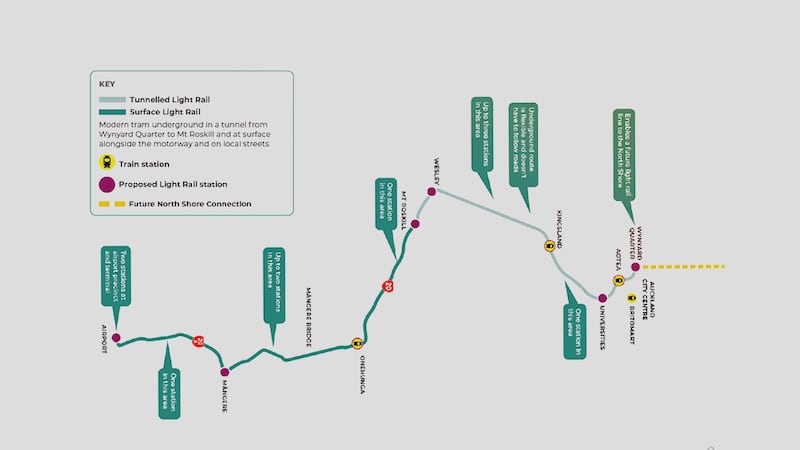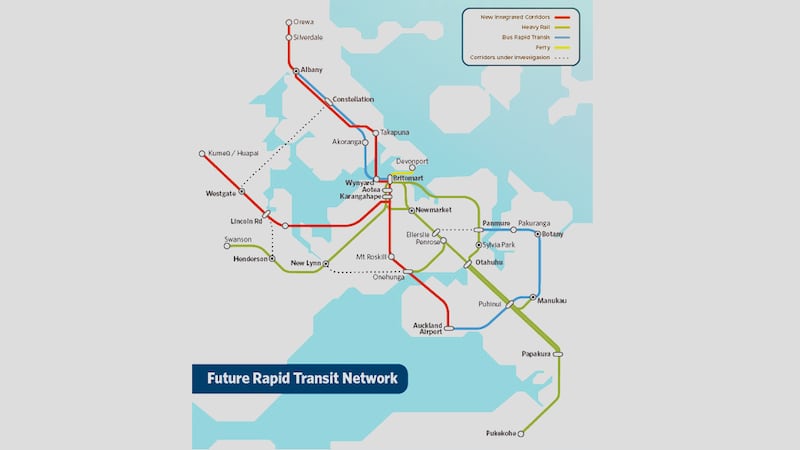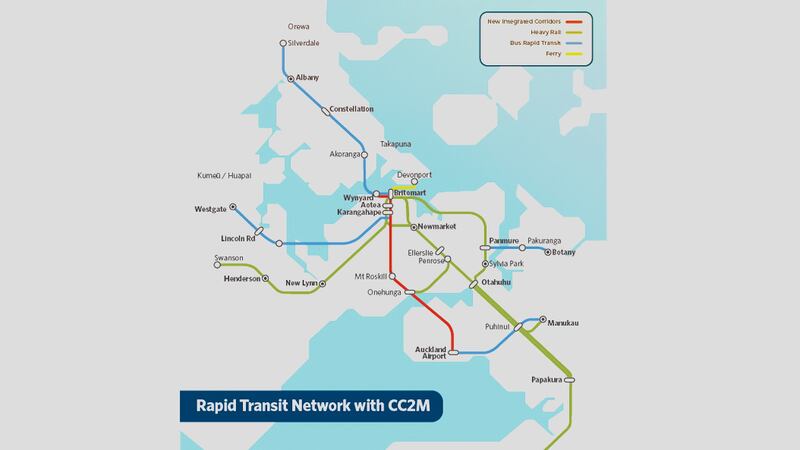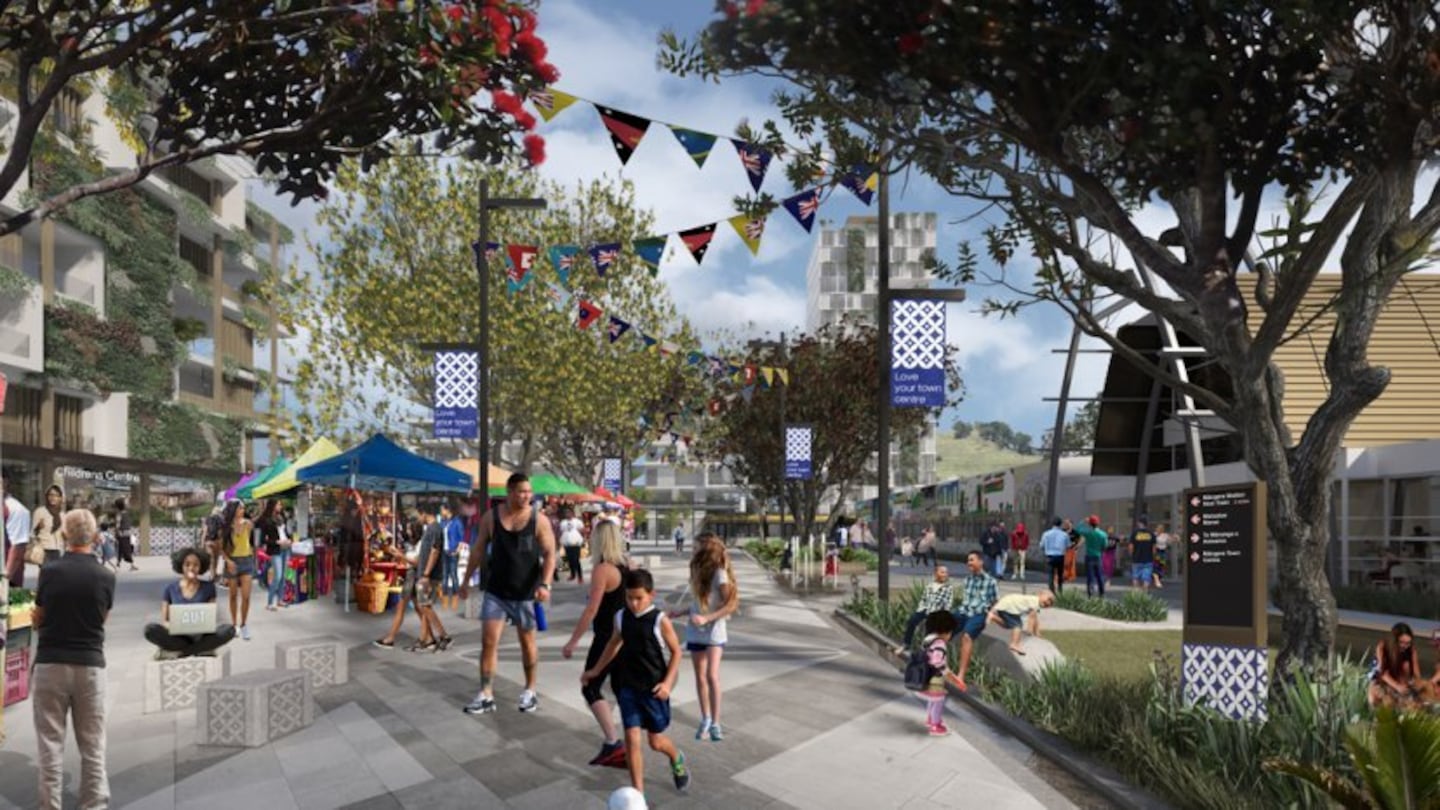“The biggest infrastructure project in New Zealand’s history” will feature a light rail stop at the Māngere Town Centre, Transport Minister Michael Wood announced today.
He said the partially tunnelled light rail favoured by the government was particularly significant to South Auckland.
“These communities have been underserved for too long and experience real transport poverty,” he said.
And he promised it would unlock jobs for South Aucklanders who he said had given “overwhelming local support” for the Māngere Town Centre stop.
Wood announced the government’s choice with Infrastructure Minister Grant Robertson.
The cabinet chose a more expensive partly tunnelled proposal than the original Dominion Road/Queen Street plan.

Both emphasised they were futureproofing Auckland.
“New Zealand has an infrastructure deficit built up over decades including lack of long-term planning, ad hoc piecemeal development, taking the cheaper option and failing to see the need for integrated planning,” Robertson said.
“We’re not going to make the mistake of previous governments to scramble to build infrastructure too late. This is about making sure Auckland will flourish as it grows.”
The ministers have moved up the decision on a tunnel or new harbour bridge for the Waitematā Harbour as part of today’s decision to ensure future infrastructure is coordinated.
“This is the most important infrastructure New Zealand has ever made. We have an integrated plan for Auckland’s urban development, which will help shape a world-class modern city,” Robertson said.
Wood said the partially tunnelled option set the future for further integration such as the harbour crossing and rapid transit to the northwest. It also avoided overwhelming Queen Stree “which has had to deal with a lot of disruption in recent years.”

Wood said if they had chosen surface light rail, it would have reached full capacity in 20 years whereas this option catered to future needs.
He said the consenting process would take three years though early works could start next year. The entire project would take six to eight years.
The 24km route features up to 18 stations and stops. Stops and stations would be closer in the surface rail areas but further apart for the undergrounded parts. Where the light rail runs at surface level, stops will be closer together. The tunnel would feature stops by the Auckland and AUT universities and the City Rail Link’s Aotea Station.
The light rail is to start at Wynyard Quarter and go underground to Wesley probably following Sandringham Road underground coming out at Wesley and running on the surface through Mt Roskill to the Southwestern motorway (SH20) heading for Mangere.
It would serve big, new and higher-density Kāinga Ora housing developments in Mt Roskill, and Māngere and intensification along the chosen route Wood said.

The ministers have optimistic expectations that up to 66,000 more intensified homes can be built along the corridor in Mt Roskill, Onehunga and Māngere and say 97.000 jobs will be created as a result.
The light rail will be able to have 15,000 people on board per hour, which could take 12,000 cars off the road, the ministers said. It will run every five minutes and it is estimated the trip from Wynyard to Māngere will be 32 minutes.
A new entity is to be created to build it, and the same organisation might also deliver an accelerated harbour crossing.
The minister said modelling had shown rapid transit from the North Shore could boost patronage on the Māngere line by 30 per cent, due to more truly cross-town trips.
Auckland mayor Phil Goff was delighted with the news today and said it would deal to the three pressing concerns of the city – congestions, transport emissions and the need for housing intensification.
Goff said that given the high cost, only central government had the resources for integrated transport infrastructure.

“I can’t say strongly enough that, without this, the city will face gridlock and will be unliveable.”
“We are losing $1.3b a year because of congestion and I think that’s conservative.
For 60 years the city had been seeing continuing growth not matched by transport infrastructure.
“Just look at the harbour bridge built in 1959. Ten years later they had to double its size to meet demand.”
Referring to a bronze statue of earlier Auckland Mayor Sir Dove Myer Robinson in Aotea Square, which depicts him shaking his fist, Goff said: “Mayor Robbie is shaking his fist at politicians in Wellington and in Auckland who did not see the need for a rapid transport system. Fifty years later his dream will be realized.
Goff said while there was a cheaper option, this was the only way to relieve congestion and reduce carbon emissions.
It would be transformational for Aucklanders where 33% of the country’s population lived.
Goff, a former Labour leader, said he met National MPs earlier and made it clear to them that by the time this project was finished there would have been two new governments. “I told them this was no time for politicking.”
But yesterday National’s transport spokesman Simeon Brown launched his party’s policy on Auckland transport. National plans to dust off plans to build the Mill Rd and East-West highways in Auckland once it gets back into government. Light rail would be canned.
Goff said his guess was that it would take more like 10 years before the project was finished given the Waterview Tunnel was agreed to in 2008 and opened in 2018.

